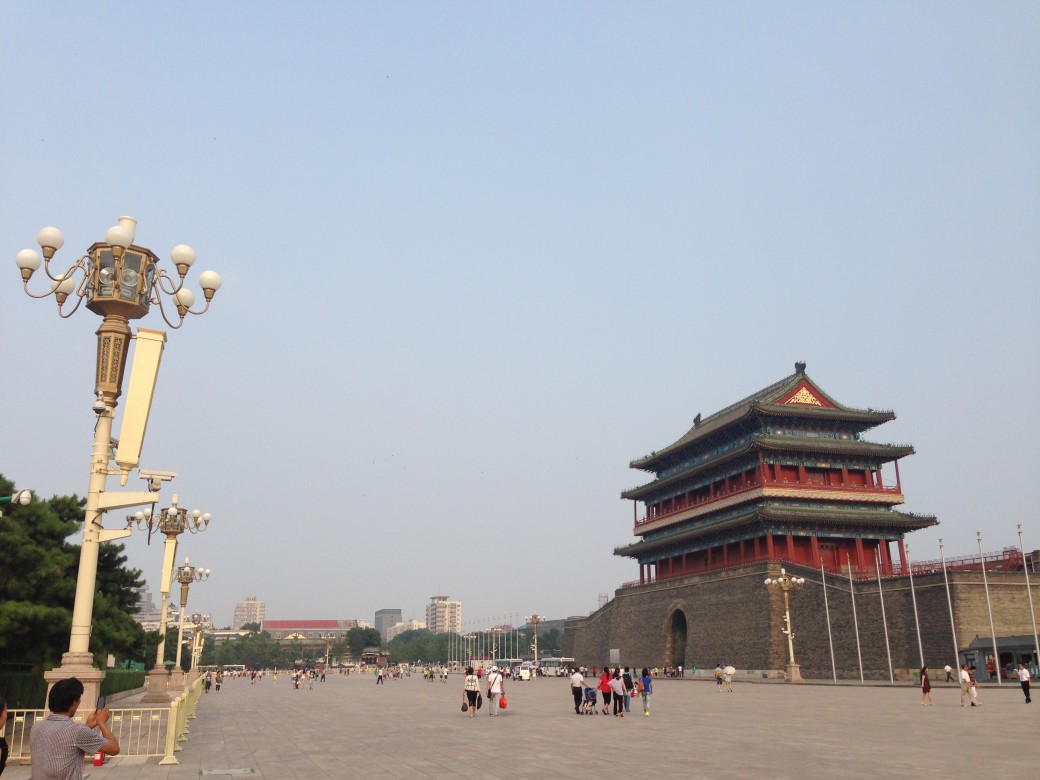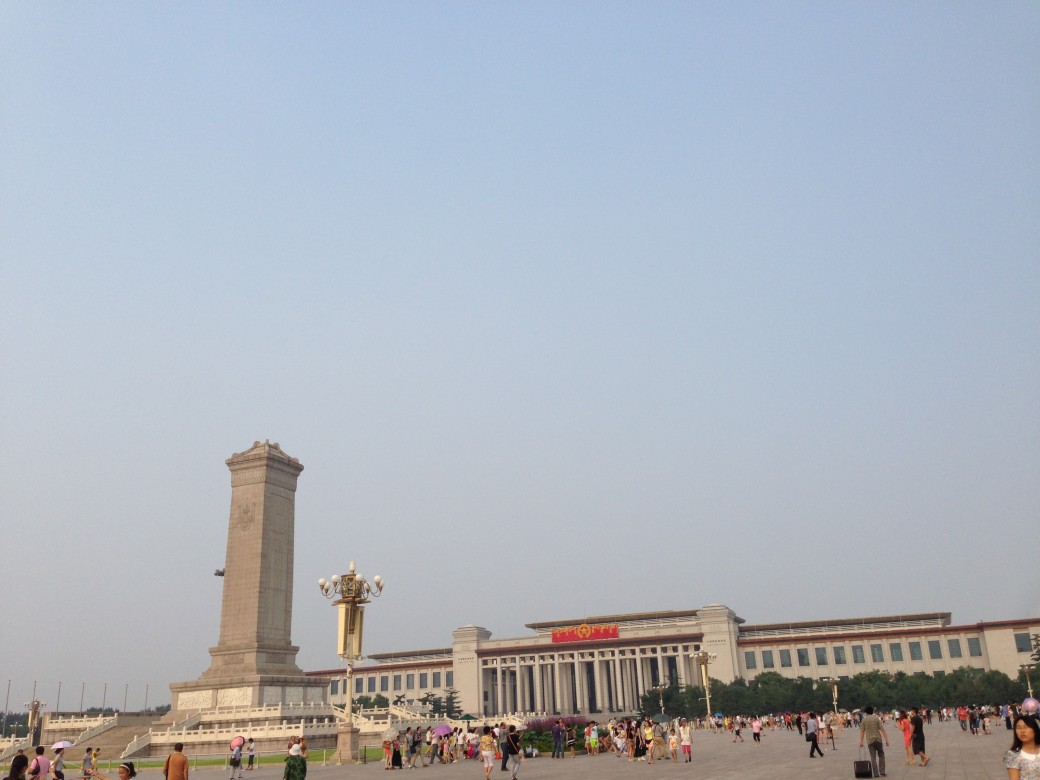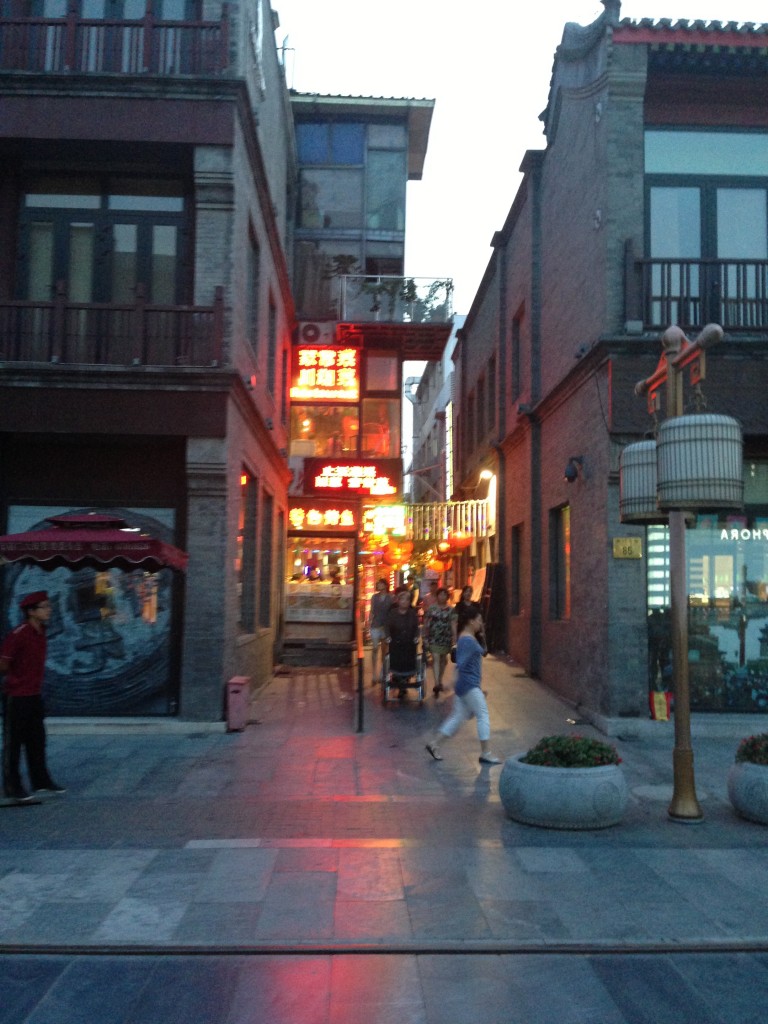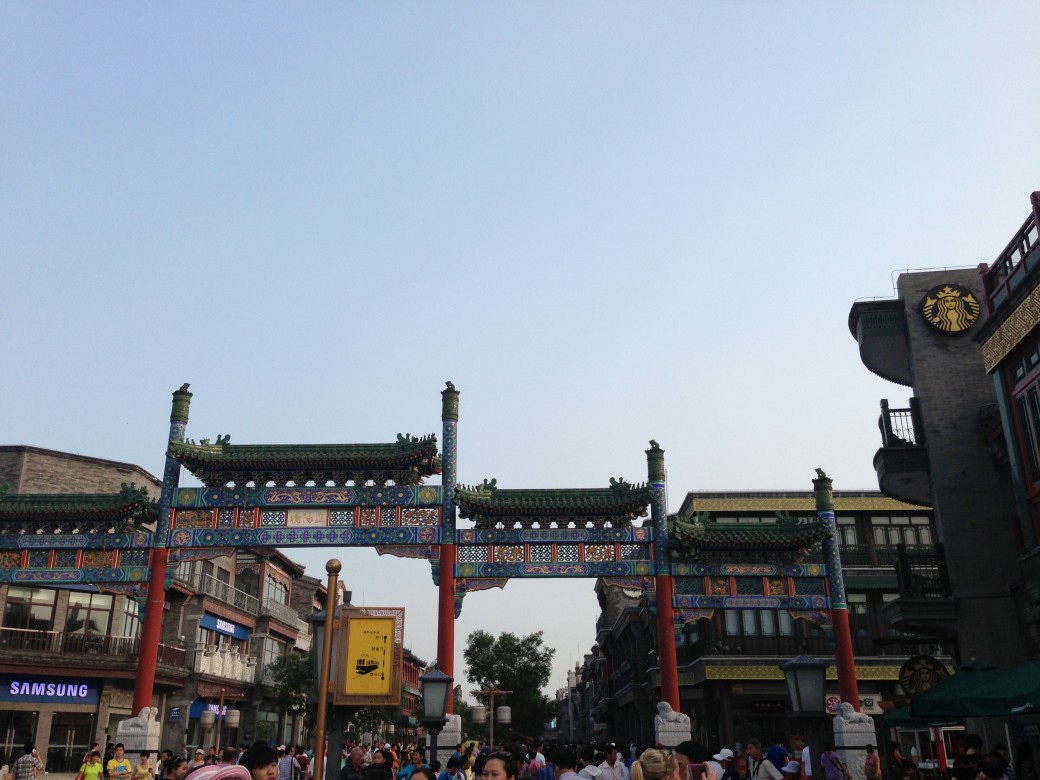Although this is just an account of my tourist experience at Tian’anmen Square, it is the location of a tragic moment in China’s history. To read what I believe is a decent history of the square, visit here. In China, this massacre is not acknowledged and is not well-known by the population. Read this article to explore how China has somehow made the massacre irrelevant.
Upon our return to Beijing, we headed to a major site we had yet to see: Tian’anmen Square.
While the Tian’anmen Square doesn’t necessarily trump the Forbidden City or the Summer Palace in Beijing, it is impressive, historical, (and a reminder of prior tragedy), in it’s own right. It’s also one of the biggest (or THE biggest, depending on the source) squares in the world, and walking around the unforgiving pavement you can certainly feel this. Don’t let that stop you, though, because it’s a must-see in Beijing. Just make sure to hydrate, or those unforgiving miles may make you REALLY feel that beer you stop for afterwards (not that I know anything about that…).
One side of the square is marked with this:
Directly opposite, the square is bordered with this monument:
And you can’t forget the middle:
But the part you REALLY can’t forget is the mausoleum that displays Chairman Mao’s body. (Which I did not snap a picture of, because there were a lot of guards around it and I’m a scaredy-cat).
Yes, you can see his body.
And, no I did not.
First of all, I did happen to see Ho Chi Minh’s preserved body in Hanoi, Vietnam, many years ago (okay, try three) and I think one passed Communist leader’s remains is might be enough to see in a lifetime (although that’s obviously just a personal choice). Also, viewing hours are only in the morning, something to remember if you ever happen to visit.
Nearby Tian’anmen is Qianmen Street, a fun, touristy shopping area full of little alleys like this:
Qianmen is a good way to end a trip to Tian’anmen–we grabbed some souvenirs, traditional Chinese noodles in a centuries-old building, and some green tea ice cream, along with our beer.
Although Tian’anmen feels like a strangely closed-off area for a public square (there are rigorous security measures before you enter, and they don’t allow ice cream, which I learned the hard way) it feels massive and, on a clear day, has the best view of the sky I’ve found in Beijing–they even restrict building height around the square.
 ^my two fellow students and our tour guide for the day, a graduate student from Beijing.
^my two fellow students and our tour guide for the day, a graduate student from Beijing.
As you can see from the final photo, Tian’anmen captures the spirit of China in a unique way: mysterious, with beautiful architecture; massive, with half-forgotten and tragic history; protective, yet wide open and crammed full with people. China is a country of enigmas and Tian’anmen is no exception.
This is letter T for the A to Z Challenge!










